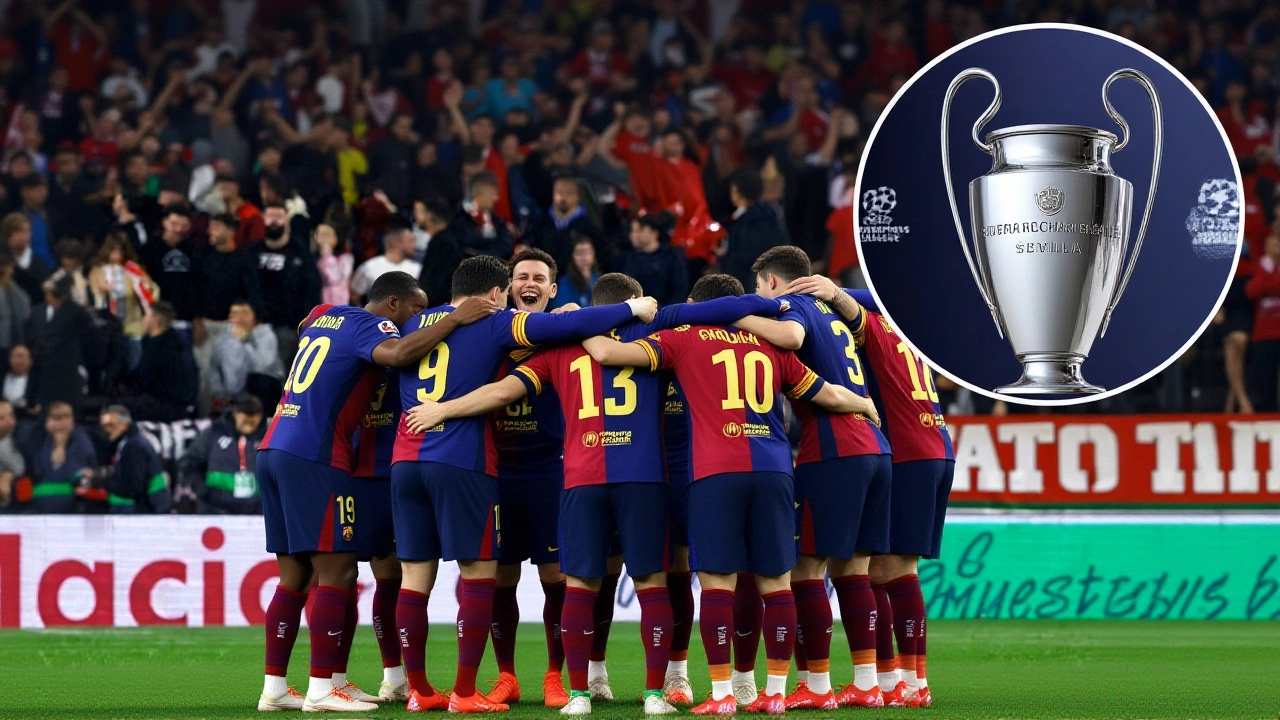Sevilla Stuns Barcelona 4-1, Real Madrid Extends Lead
Sevilla's 4-1 demolition of Barcelona at the Ramón Sánchez Pizjuán Stadium propels them into European contention and widens Real Madrid's LaLiga lead.
When you hear Ramón Sánchez Pizjuán, a historic football stadium in Seville, Spain, with a 43,000‑seat capacity that serves as the home ground of Sevilla FC. Also known as Estadio Ramón Sánchez Pizjuán, it has hosted World Cup matches, Copa del Rey finals, and countless La Liga battles.
At the heart of the venue sits Sevilla FC, the professional club that competes in Spain's top division, La Liga. The club’s identity is woven into the stadium’s architecture: the famous red‑and‑white flag waves over the north stand, while the pitch reflects the team's attacking philosophy. La Liga, Spain’s premier football league that fields 20 clubs across the country provides the weekly stage where Sevilla tests its rivals, and strong performances here can unlock places in the UEFA Champions League, Europe’s elite club competition that rewards domestic success with continental glory. The stadium’s atmosphere, packed with passionate fans, often decides tight games, creating a clear link: the venue influences match outcomes, the club’s league standing feeds into European qualification, and European nights bring extra revenue that fuels stadium upgrades.
Beyond the brick and mortar, Ramón Sánchez Pizjuán shapes the narratives you see in sports headlines. A packed crowd can lift a striker’s confidence, while a quiet night might hint at tactical shifts. The venue’s legacy includes moments like the 2015 Europa League final, where Sevilla clinched its third title, and the 2022 match where a young talent scored a hat‑trick that sparked transfer rumors across Europe. These stories illustrate three semantic triples: (1) Ramón Sánchez Pizjuán hosts Sevilla FC home games; (2) Sevilla FC competes in La Liga; (3) La Liga feeds teams into the UEFA Champions League. Each triple connects the stadium, the club, and the broader football ecosystem, giving readers a framework to understand the headlines below.
The collection of posts on this page reflects that framework. You’ll find match reports that mention the stadium’s roar during a crucial derby, analyses of player performances that reference the pitch’s condition, and updates on how Sevilla’s league position impacts its European campaign. From a 5‑0 Brazil friendly that sparked talks about future qualifiers, to a Korean defeat that raised questions about squad rotation, the articles show how stadiums, clubs, leagues, and continental tournaments interact on a daily basis. Even stories about voter registration in Nigeria or passport rankings in Cameroon appear because they share the same theme of national identity shaping opportunities – just like a stadium embodies regional pride for its fans.
What’s coming next? Below you’ll discover a curated list of recent news pieces that tie directly back to the stadium’s role in football, the club’s league battles, and the ripple effects on European competition. Whether you’re tracking a player’s goal tally, checking how a match outcome influences league tables, or curious about the stadium’s upcoming renovations, the posts give you timely, actionable insight. Dive in and see how Ramón Sánchez Pizjuán continues to be more than a venue – it’s a living part of the sport’s story.

Sevilla's 4-1 demolition of Barcelona at the Ramón Sánchez Pizjuán Stadium propels them into European contention and widens Real Madrid's LaLiga lead.